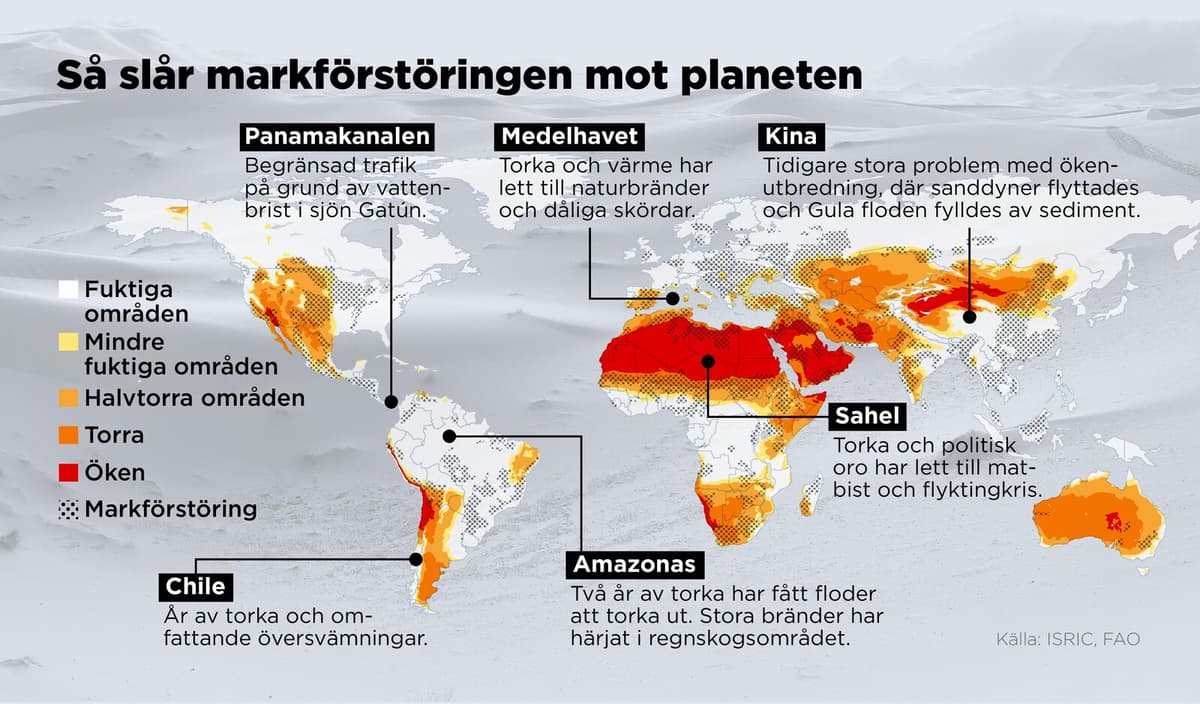Perhaps part of the problem for UNCCD lies in the name. The UN Convention to Combat Desertification is as much a UN top meeting as the more famous COP meetings on climate and biological diversity, which took place earlier this autumn, but receives significantly less attention.
The meeting, despite its name, deals more with land than desert, explains Deputy Secretary-General Andrea Meza Murillo, ahead of COP16, which is being held this year in the Saudi capital Riyadh.
The important thing is to avoid land degradation, which occurs worldwide. It has an impact on food supply, water supply, and even on climate and biological diversity goals, she says.
"Never could have imagined"
When land degrades, it becomes harder for plants to live there, even on cultivated land. It is closely linked to drought.
It used to be a problem in specific areas. But now we see it in places where we never could have imagined it a few years ago, such as in the Amazon, says Meza Murillo.
When drought hits vulnerable communities that are dependent on agriculture, it leads to people being forced to migrate. If land degradation occurs in already dry areas, arable land and grasslands can turn into desert.
If we continue to see this trend of land degradation, and also the spread of dry areas, it's easy to lose these land areas.
No financial goal
There are several things that can be done to counteract the problems. Establish early warning systems for approaching drought, install rainwater collection systems, or plant trees to stop desertification.
Unlike the climate COP and bio-COP, the desert COP has not come as far in its global agreements. Here, the goal is to start working preventively, intensify knowledge exchange, and find a common ground to stand on. An economic report will be released on the cost of measures to curb land degradation. But countries are not expected to negotiate a financial goal, like the one set at the climate summit recently.
We're not there yet, but I think that with the report, we'll start talking about a specific figure. It will probably happen in the future, says Andrea Meza Murillo.
The UN's three COP meetings originated from the Rio Conference in 1992, where countries met to discuss the planet's challenges.
It resulted in three agreements, conventions, to combat climate change, the depletion of biological diversity, and desertification.
COP stands for "Conference of the Parties" and refers to the parties in the conventions. The climate meeting is held every year, while the other two usually take place every other year.
The climate meeting and biological diversity meeting were held earlier this autumn in Azerbaijani Baku and Colombian Cali, respectively, and the "desert COP" is taking place from December 2-13 in Saudi Riyadh.





